
Q: I am planning to return to diving after a mild case of cutaneous decompression sickness (DCS), or “skin bends”. If I dive using nitrox, will that be enough to prevent recurrence of DCS?
A: Conservative diving is strongly recommended to avoid a repeat DCS incident. Cutaneous DCS has about a 20 percent chance of having a neurological component. The next event could be similar to this one or be significantly more severe. Diving conservatively, however, involves more than simply switching to nitrox. Consider the following recommendations:
• Dive with nitrox, but set your computer to “air” or “21 percent.” Clearly note the maximum operating depth (MOD) for the mix you’re actually breathing, and never exceed that depth. Use a partial pressure of oxygen (PPO2) setting of 1.4 or lower to avoid oxygen toxicity. If you reset your computer to a nitrox setting, then your potential bottom time will be calculated as longer and defeat the purpose of minimising gas loading. Nitrox is only safer if you shorten bottom times.
• Spend an extended period at less than 9 metres (30 feet), and add long safety stops to allow off-gassing prior to surfacing. Extra stop time in shallow water is an effective way to reduce decompression stress and the likelihood of bubble formation.
• Select the most conservative setting on your computer to limit bottom time.
• Use a slow ascent rate of 6 to 9 metres (20 to 30 feet) per minute.
• Extend your surface interval, especially after long, deep and repetitive dives.
Bu hikaye Scuba Diver dergisinin Issue 05 - 2020(119) sayısından alınmıştır.
Start your 7-day Magzter GOLD free trial to access thousands of curated premium stories, and 9,000+ magazines and newspapers.
Already a subscriber ? Giriş Yap
Bu hikaye Scuba Diver dergisinin Issue 05 - 2020(119) sayısından alınmıştır.
Start your 7-day Magzter GOLD free trial to access thousands of curated premium stories, and 9,000+ magazines and newspapers.
Already a subscriber? Giriş Yap
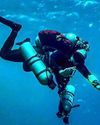
The Making Of A World Record-Breaking Diver
Descending more than 300 metres into the depths of the ocean may sound like a daunting prospect to even the most seasoned diver. But to one man, it was just another a challenge that he set for himself to see how far he was able to push the envelope.
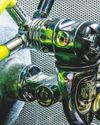
Risk Mitigation: Hose Failure
An unexpected outcome
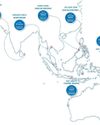
Top 10 Wrecks Of Asia-Pacific
We present a curated list of the top 10 most famous wrecks found in the Asia-Pacific region, listed in no particular order
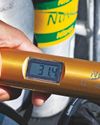
From The Medical Line: Diving After DCS
DAN medical information specaialists and researchers answer your dive medicine questions

Cave Exploration: Beginning With The End In Mind
Building complex adventures on simple skills
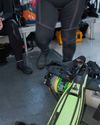
Dive Slate: Stay Safe On Board
When preparing for a dive, safety is at the top of the list – checking gear, learning potential site hazards and discussing procedures with your divemaster or buddy.

101 Tips On Becoming A Better Tek Diver
Technical diving takes divers beyond the typical recreational scuba diving limits, opening up many new and exciting possibilities.
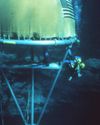
TECHNICAL DIVING TIMELINE (1660–1999)
It’s fair to say that the emergence of “technical diving” in the late 1980s, that is, the introduction of mixed gas technology, and later mixed gas rebreathers to the sport diving community, represented the culmination of hundreds of years of scientific discovery and technological development.

FLYING AFTER DIVING
From the Safety Stop

DIAGNOSING DECOMPRESSION ILLNESS
Incident Insight